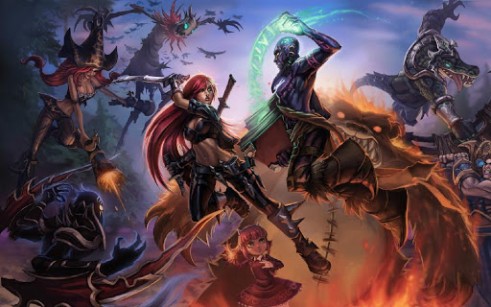Our Thoughts to Get the Gaming Experience Spot-on
A gaming environment is quite an interactive parable. It is said to be an adventure experience that can evolve to being more than a real world’s journey. As a game designer, you serve a group of people who are ruled by their passion. Together with a great user interface, you also need to work on an immersive journey that will make people forget reality and embrace the world within the game. As such, a game designer is nothing less than a superstar for the gamers. Here are some nuances that help you get the right gaming experience to your audience.
Knowing the Emotion you want your Player to go through when playing
The key to creating/designing the perfect gaming experience is asking yourself “what do I need the player to feel in the course of the game”. Is the core objective of the game to inspire excitement, mystery, fear, sense of adventure, or insanely challenging? The “Impossible Game” should be a perfect example to bring out now, wherein users feel challenged and stressed apart from the frustrating title! These emotions should be deeply laid out before you even begin writing the storyboard. “Knowing the emotions” can act as a guideline to your story and the game architecture.
Develop a Prototype Accordingly
Now that you know what you want your user to feel, start developing a storyboard that instigates the objectives (the apt emotions). This is where the story is conceptualized and requires a lot of creativity to be pitched in. Users need to be guided to your objectives using scenarios, animations, sounds and virtual rewards/recognitions. Even the gaming graphics can leverage a sense of emotions when put in place. This should be the purest state of your game.
Choose the Test Player Wisely
Before releasing a game to the end users, you need to practically test whether the real use case has been able to live to the “objectives”. Every developer offers his creation to a ‘test player’ who is meant to give the first valuable feedback for further refinement. However, be sure that the test player clearly defines your end user. To take an instance, if you have been working on a game that is meant for kids between the age of 5 and 10, you cannot have a test player who is middle aged employed person. Consider the test player as your first user and make sure he/she is capable of providing a appropriate yet relevant feedback.
Add More Suitable Elements to Bring a Zing to the Game
Now that you know the quality of your game and the suggestions for improvement, it’s time to add other additional ingredients that will uniquely identify your game from others in the market. It’s just like dressing the turkey for a delightful presentation. However these additions should also again strictly comply with your game objectives. You simply cannot have a funny clown dancing to nursery rhymes if you are trying to create a horror experience.
Compare Initial Game and Newly Refined Game to see if the Expected Experience Comes Across
The second and final process of review is to ensure that the new changes brought into the game design/environment puts the right thoughts across. If you could visualize more integration, go for them. Your game should be able to ace the gaming experience.



